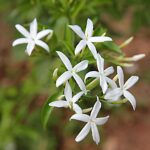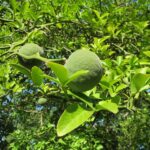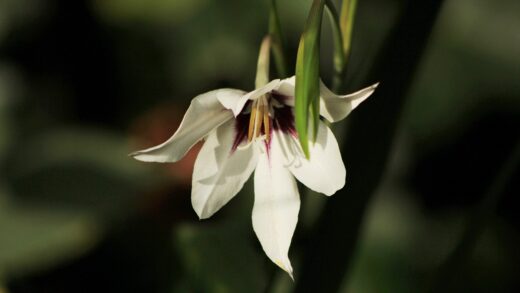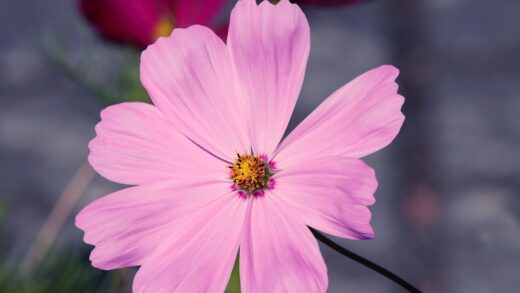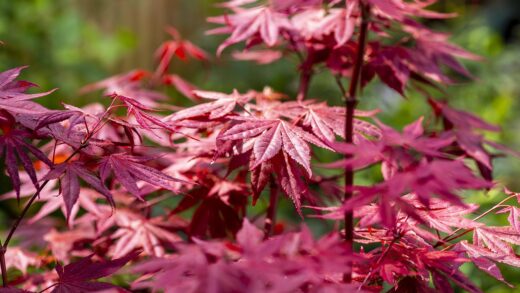Successfully overwintering rose campion is less about active protection and more about ensuring the correct foundational conditions have been met from the outset. This hardy species, generally resilient in USDA zones 4 through 8, has evolved to withstand cold winter temperatures. Its primary vulnerability during the dormant season is not the cold itself, but rather the combination of cold and excessive moisture at its crown and roots. Therefore, the strategy for winter care is a passive one, focused on providing an environment that prevents waterlogging and allows the plant to endure the winter months with its own natural resilience.
The plant prepares for winter by forming a low-lying basal rosette of its characteristic silvery, woolly leaves. This foliage is semi-evergreen, meaning it will persist through much of the winter, providing valuable texture and colour to the otherwise stark landscape. This rosette is the life-support system of the plant during dormancy, and its health is paramount for the vigorous growth that will emerge in the spring. The key to protecting this rosette is to ensure it remains relatively dry and is not smothered by heavy, wet debris or mulch.
The most significant action a gardener takes for the winter survival of rose campion happens long before the first frost arrives; it occurs on planting day. The selection of a site with sharp, unimpeded drainage is the single most important factor in ensuring the plant makes it through the winter. In regions with cold, wet winters, soil that retains water becomes a death trap, leading to the fatal crown and root rot that is the species’ primary enemy. All other winter care considerations are secondary to this fundamental requirement.
While rose campion is inherently tough, a few simple end-of-season tasks can help to improve its chances, particularly for younger plants or those in marginal zones. These tasks are not about coddling the plant with heavy insulation, but rather about maintaining a clean and well-draining environment around its base. By understanding that the main threat is moisture, not frost, the gardener can take the appropriate, minimalist steps to guide this resilient perennial safely through the winter and into another season of vibrant bloom.
Preparing for dormancy
As autumn progresses and temperatures begin to fall, rose campion naturally begins its preparation for winter dormancy. The vigorous flowering of summer ceases, and the plant’s energy is redirected from producing blooms to fortifying the basal rosette of leaves that will sustain it through the cold months. The gardener’s role during this transition is primarily one of observation and light cleanup. It is a time to ensure the area around the plant is free from conditions that could promote disease or moisture retention during winter.
More articles on this topic
One of the main decisions in autumn is how to handle the spent flower stalks. These can be cut back to the basal foliage for a tidier appearance over winter. This also prevents the plant from expending its final energy reserves on seed production, allowing it to consolidate resources in the crown and roots. Furthermore, removing the old stems can improve air circulation around the base of the plant, which is beneficial for preventing fungal issues. However, some gardeners may choose to leave the seed heads in place for winter interest and to provide food for birds like finches. If this is done, the stalks should be removed in late winter or early spring before new growth begins.
It is also crucial to clear away any fallen leaves or other debris that has accumulated around the base of the rose campion. A thick mat of wet, decaying leaves packed against the crown is a primary cause of winter rot. This debris traps moisture, reduces air circulation, and can create a haven for slugs and other pests. Gently raking or clearing this material away from the plant’s base allows the crown to remain exposed to the air and dry out more effectively between periods of rain or snowmelt.
This period is also a final opportunity to assess the drainage around the plant. If water has been observed pooling near the rose campion after autumn rains, it may be necessary to take corrective action. This could involve creating a small channel or swale to divert water away from the plant’s crown. While it is best to have chosen a well-draining site initially, this last-minute intervention can sometimes make the difference between survival and loss in a particularly wet winter. No additional fertilization or heavy pruning should be done at this time, as it could stimulate new growth that would be vulnerable to frost damage.
The role of mulch in winter
The topic of mulching rose campion for winter protection requires careful consideration, as the wrong type of mulch can do more harm than good. Traditional winter mulches, such as shredded leaves, straw, or bark chips, are designed to insulate the soil and protect plant crowns from extreme cold and freeze-thaw cycles. However, these organic materials also have the significant drawback of retaining moisture. For a plant like rose campion, which is highly susceptible to rot, a moisture-retentive mulch applied around its crown is extremely dangerous.
More articles on this topic
Therefore, applying a thick layer of organic mulch over the top of the rose campion’s basal rosette should be strictly avoided. Smothering the semi-evergreen foliage under a damp blanket of mulch is a near-certain way to cause the crown to rot over the winter. The plant’s own foliage, along with a protective blanket of snow, provides all the insulation it typically needs. The fine hairs on the leaves are an adaptation that helps to trap a layer of insulating air, offering a degree of natural frost protection.
If a mulch is desired for aesthetic reasons or for weed suppression, the best choice is an inorganic material. A layer of pea gravel, crushed stone, or coarse sand can be applied around the base of the plant, being careful not to bury the crown. This type of mulch does not retain water; in fact, it helps to promote drainage and allows the soil surface to dry out quickly. It provides a clean, dry buffer between the plant’s crown and the surrounding soil, effectively reducing the risk of rot.
In very cold climates at the edge of the plant’s hardiness range (e.g., Zone 4), some gardeners may feel the need for extra insulation. If this is the case, a very light and airy material, such as pine boughs, can be laid over the plants after the ground has frozen. This material helps to trap snow, which is an excellent insulator, without compacting and holding moisture in the same way that leaves or straw would. The boughs should then be removed promptly in early spring as the snow recedes.
Winter hardiness and survival
Rose campion is classified as a hardy perennial, capable of surviving winter temperatures down to approximately -30°F (-34°C), which corresponds to USDA Hardiness Zone 4. This impressive cold tolerance means that for most gardeners within its recommended range, the plant will survive the winter without any special protection, provided its cultural needs are met. The plant’s survival is not a matter of its ability to withstand low temperatures, but rather its ability to tolerate the winter environment as a whole.
The key factor influencing its winter survival is the state of the soil. The plant can endure deep freezes without issue if the soil is well-drained. However, if the soil is heavy and waterlogged, the repeated freezing and thawing of this water can heave the plant out of the ground, tearing its roots. Furthermore, as has been repeatedly emphasized, the combination of cold and wet is a fatal recipe for rot. A plant in well-drained soil will always have a significantly higher chance of winter survival than one in a damp location, regardless of the absolute lowest temperature reached.
Snow cover plays a beneficial role in the winter survival of rose campion. A reliable blanket of snow acts as a natural insulator, protecting the crown and roots from the coldest temperatures and drying winds. It maintains a more stable, albeit frozen, temperature in the soil, preventing the damaging effects of repeated freeze-thaw cycles. In regions with cold but snowless winters, the plants are more exposed and may experience more stress. In these areas, the use of a light covering like pine boughs can be particularly helpful.
It is also important to remember the biennial or short-lived perennial nature of rose campion. Sometimes, a plant’s failure to return in the spring is not a result of a harsh winter but is simply the natural conclusion of its life cycle. However, because the plant self-seeds so readily, new seedlings will typically appear in the spring to replace the parent plant. This regenerative life strategy is the plant’s ultimate insurance policy for long-term survival in the garden.
Spring care after dormancy
As winter begins to recede and the first signs of spring appear, it is time to perform a few simple tasks to help the rose campion emerge from dormancy. The first order of business is cleanup. Any remaining old flower stalks from the previous year should be cut back to the base. It is also the time to carefully remove any winter-damaged, brown, or mushy leaves from the basal rosette. This tidying up not only improves the plant’s appearance but also enhances air circulation and directs the plant’s energy towards producing fresh, new growth.
If any winter mulch, such as pine boughs, was used, it should be removed as soon as the threat of prolonged, hard freezes has passed. This allows the sun to reach the soil, warming it up and encouraging the plant to break dormancy. It also prevents the mulch from trapping moisture around the crown as spring rains begin. A gentle raking around the plant can help to remove any remaining winter debris that may have blown in.
This is a critical time to monitor for new growth. Small, silvery leaves should begin to emerge from the center of the crown as temperatures rise. The appearance of this new growth is the surest sign that the plant has successfully survived the winter. It is also the time to look for the small, fuzzy-leaved seedlings of self-sown plants from the previous year. These can be left to grow in place, carefully transplanted to other areas of the garden, or thinned out to prevent overcrowding.
Once new growth is actively underway, the plant will begin to develop rapidly. It is important to ensure that the soil remains moist but not waterlogged, especially if spring is dry. A single application of a balanced, slow-release fertilizer could be considered at this time only if the soil is exceptionally poor, but in most cases, it is not necessary. With this simple spring cleanup and a bit of early-season observation, the rose campion will be well on its way to producing another spectacular summer display.










